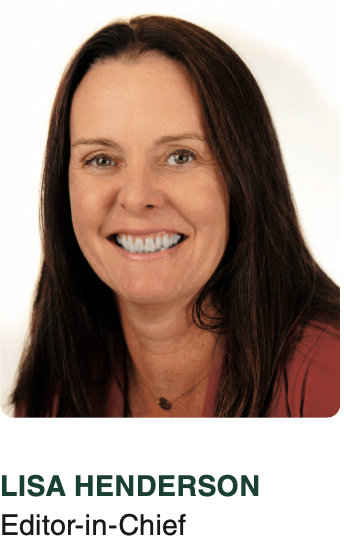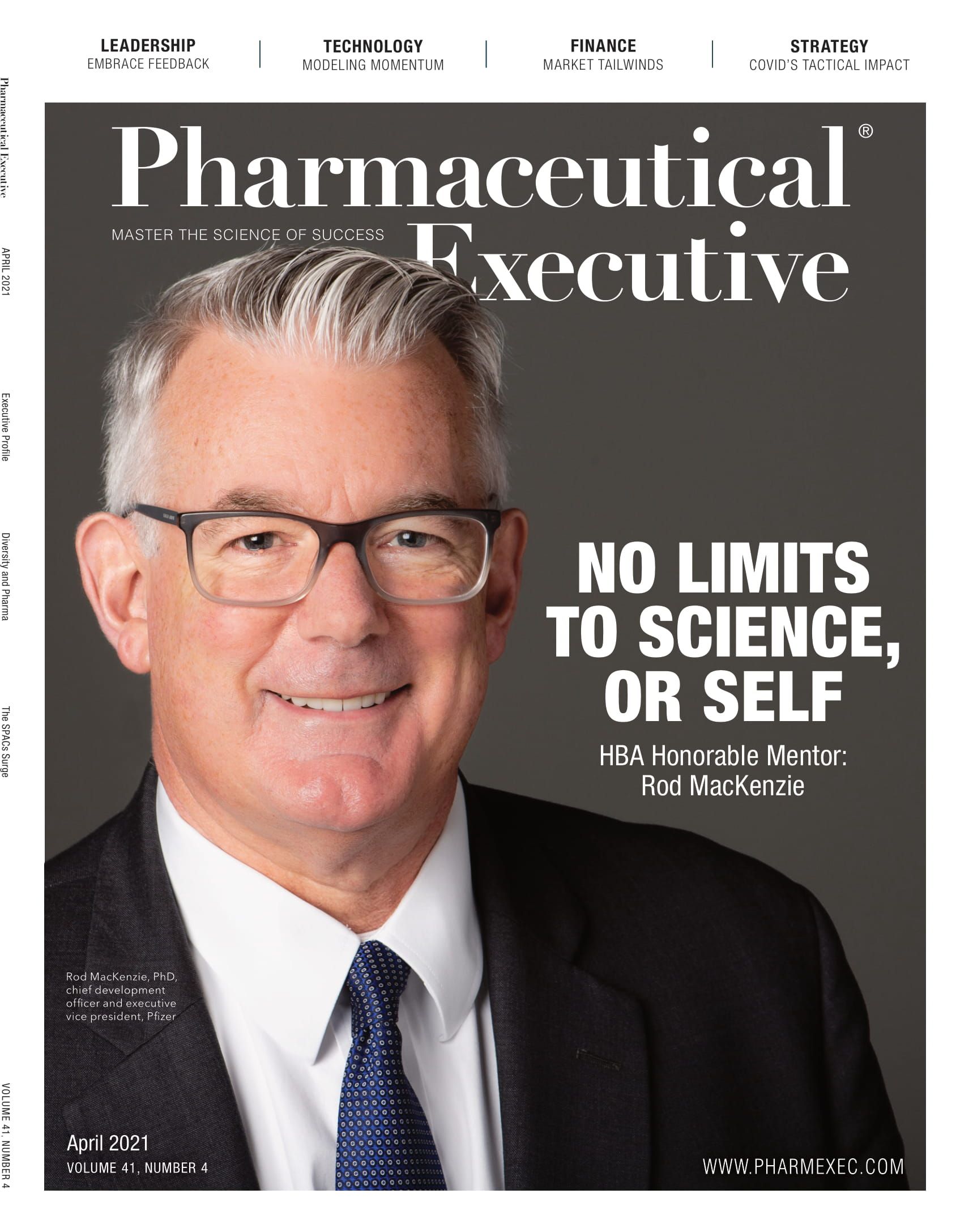The Power of Parity
Ethics and diversity on full display across pharma industry.

When I interviewed Rod MacKenzie, PhD, chief development officer and executive vice president of Pfizer, for this month’s cover story, it was the day after I received the second dose of the Pfizer-BioNTech COVID-19 vaccine. I thanked MacKenzie for his company’s triumph in bringing this vaccine to the people. He kindly said he would pass my thanks onto his team. He offered that he was getting his second dose a week later. It was a surprise to me that I would get it before a person on the executive team of one of the companies bringing this historical medicine to the world. Ethics in action. This example also speaks to MacKenzie’s nature—a thoughtful, committed leader who has been recognized for impacting the careers of numerous women and men throughout his own career.
The Healthcare Businesswomen’s Association’s Honorable Mentor recognition is in its 20th year, and Mac-Kenzie received the award for the 2020/2021 combined year. The HBA Woman of the Year for 2020/2021, Sandra Horning, MD, graced our cover last April, and her story a year later is updated here. The HBA recognizes the woman (and in some cases, women), honorable mentor, and rising stars or luminaries for their contributions to the HBA’s mission of achieving gender parity in leadership positions; facilitating career and business connections; and providing effective practices that enable organizations to realize the full potential of their female talent. This year’s virtual event will take place May 6, with registration available here.
As MacKenzie alludes to in his profile, it is hard to believe that the status of gender inclusion at the executive level is still an issue in the year 2021. Credit the HBA for taking its organization forward for women in the healthcare and pharma professions, as more and more companies are taking notice and implementing stronger accountability and actionable improvements toward increasing the numbers of female representation at higher levels.
But it’s not just at the company level that the corporate world needs to diversify—it’s also at the board level. In Christine Bahls' article regarding the imperative for including women on boards of directors, she noted the forces behind gender inclusion have more recently become a regulatory necessity, not just the right thing to do. The article puts forth that women have traditionally been valued for qualities such as nurturing, empathy, and collaboration, which may be an over-simplification; however, the point is that the competitive benefits of diversifying membership is not just to say they have the female head count, but to recognize the varying experiences and thought-processes that are brought to bear in this role of collaborative input and shared decision-making.
In the article, it is noted that boards are a natural progression of executive management. Roles at the executive level provide the experience necessary to help another company to grow. That, in and of itself, is what makes a good board member—who is ultimately the custodian for the shareholders.
The editors made a conscious decision this year to separate gender out of the overall diversity conversation. It’s clear that having more female representation at levels of influence is philosophically the same as having all historically underrepresented groups present at that table. Just as clear is that women come at life from one gender-collective experience, which is further nuanced from a Black woman, to a Hispanic woman, or an Asian woman’s perspective. The value of bringing all women into one conversation and addressing diversity of race in a parallel conversation including both men and women and what is needed to elevate the racial representation of leadership, may be complementary, but different.
But what the goals of gender and racial diversity have in common are leveraging the power and influence of those who have it to sponsor and lift up those that don’t. That could mean, as MacKenzie noted, speaking up when you recognize an overt or unconscious bias and calling it out. It could mean, as Michael Injaychock, executive director, data and analytics, brand operations, cell therapy, BMS, said in the boards article, to be willing to see the capabilities of the person you want to hire, and to have the conviction to stand by that decision and go to bat for them. And, too, Horning noted that being a leader means having courage to make decisions or to call out things that need changing.
She added that it also means being objective about people and data. And isn’t that what parity is about—being objective about people and offering recognition on performance?
Lisa Henderson is Pharm Exec’s Editor-in-Chief. She can be reached at lhenderson@mjhlifesciences.com.

Addressing Disparities in Psoriasis Trials: Takeda's Strategies for Inclusivity in Clinical Research
April 14th 2025LaShell Robinson, Head of Global Feasibility and Trial Equity at Takeda, speaks about the company's strategies to engage patients in underrepresented populations in its phase III psoriasis trials.
Beyond the Prescription: Pharma's Role in Digital Health Conversations
April 1st 2025Join us for an insightful conversation with Jennifer Harakal, Head of Regulatory Affairs at Canopy Life Sciences, as we unpack the evolving intersection of social media and healthcare decisions. Discover how pharmaceutical companies can navigate regulatory challenges while meaningfully engaging with consumers in digital spaces. Jennifer shares expert strategies for responsible marketing, working with influencers, and creating educational content that bridges the gap between patients and healthcare providers. A must-listen for pharma marketers looking to build trust and compliance in today's social media landscape.